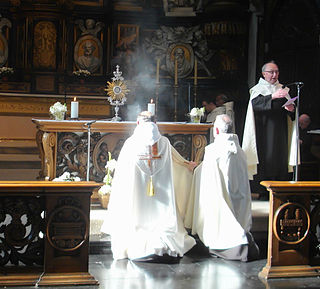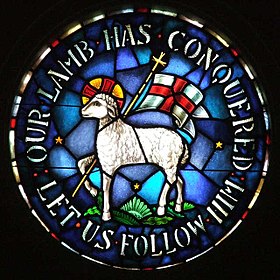Spirit of the Moravian Church
An account of the ethos of the Moravian Church is given by one of its British Bishops, C H Shawe. In a lecture series delivered at the Moravian Theological Seminary in Bethlehem, Pennsylvania, Shawe described the Spirit of the Moravian Church as having five characteristics. These are simplicity, happiness, unintrusiveness, fellowship and the ideal of service.
Simplicity is a focus on the essentials of faith and a lack of interest in the niceties of doctrinal definition. Shawe quotes Zinzendorf's remark that 'The Apostles say: "We believe we have salvation through the grace of Jesus Christ ...." If I can only teach a person that catechism I have made him a divinity scholar for all time'. [24] From this simplicity flow secondary qualities of genuineness and practicality.
Happiness is the natural and spontaneous response to God's free and gracious gift of salvation. Again Shawe quotes Zinzendorf: 'There is a difference between a genuine Pietist and a genuine Moravian. The Pietist has his sin in the foreground and looks at the wounds of Jesus; the Moravian has the wounds in the forefront and looks from them upon his sin. The Pietist in his timidity is comforted by the wounds; the Moravian in his happiness is shamed by his sin'. [25]
Unintrusiveness is based on the Moravian belief that God positively wills the existence of a variety of churches to cater for different spiritual needs. There is no need to win converts from other churches. The source of Christian unity is not legal form but everyone's heart-relationship with the Saviour.
Fellowship is based on this heart-relationship. Shawe says: 'The Moravian ideal has been to gather together kindred hearts ... Where there are "Christian hearts in love united", there fellowship is possible in spite of differences of intellect and intelligence, of thought, opinion, taste and outlook. ... [In Zinzendorf's time] Fellowship meant not only a bridging of theological differences but also of social differences; the artisan and aristocrat were brought together as brothers and sat as equal members on the same committee'. [26]
The ideal of service entails happily having the attitude of a servant. This shows itself partly in faithful service in various roles within church congregations but more importantly in service of the world 'by the extension of the Kingdom of God'. Historically, this has been evident in educational and especially missionary work. Shawe remarks that none 'could give themselves more freely to the spread of the gospel than those Moravian emigrants who, by settling in Herrnhut [i.e., on Count Zinzendorf's estate], had gained release from suppression and persecution'. [27]
Anglicanism is a Western Christian tradition which developed from the practices, liturgy, and identity of the Church of England following the English Reformation, in the context of the Protestant Reformation in Europe. It is one of the largest branches of Christianity, with around 110 million adherents worldwide as of 2001.

The Eucharist, also known as Holy Communion, Blessed Sacrament and the Lord's Supper, is a Christian rite that is considered a sacrament in most churches, and as an ordinance in others. Christians believe that the rite was instituted by Jesus at the Last Supper, the night before his crucifixion, giving his disciples bread and wine. Passages in the New Testament state that he commanded them to "do this in memory of me" while referring to the bread as "my body" and the cup of wine as "the blood of my covenant, which is poured out for many". According to the Synoptic Gospels this was at a Passover meal.

Mass is the main Eucharistic liturgical service in many forms of Western Christianity. The term Mass is commonly used in the Catholic Church, Western Rite Orthodoxy, Old Catholicism, and Independent Catholicism. The term is also used in some Lutheran churches, as well as in some Anglican churches, and on rare occasion by other Protestant churches.

An agape feast or lovefeast is a term used for various communal meals shared among Christians. The name comes from the Greek word ἀγάπη (agape), which implies love in the sense of brotherly or familial affection.

The Free Church of England (FCE) is an episcopal church based in England. The church was founded when a number of congregations separated from the established Church of England in the middle of the 19th century.

Anglican church music is music that is written for Christian worship in Anglican religious services, forming part of the liturgy. It mostly consists of pieces written to be sung by a church choir, which may sing a cappella or accompanied by an organ.

The Moravian Church, or the Moravian Brethren, formally the Unitas Fratrum, is one of the oldest Protestant denominations in Christianity, dating back to the Bohemian Reformation of the 15th century and the Unity of the Brethren founded in the Kingdom of Bohemia, sixty years before Luther's Reformation.
Christian liturgy is a pattern for worship used by a Christian congregation or denomination on a regular basis. The term liturgy comes from Greek and means "public work". Within Christianity, liturgies descending from the same region, denomination, or culture are described as ritual families.

The Easter Vigil, also called the Paschal Vigil or the Great Vigil of Easter, is a liturgy held in traditional Christian churches as the first official celebration of the Resurrection of Jesus. Historically, it is during this liturgy that people are baptized and that adult catechumens are received into full communion with the Church. It is held in the hours of darkness between sunset on Holy Saturday and sunrise on Easter Day – most commonly in the evening of Holy Saturday or midnight – and is the first celebration of Easter, days traditionally being considered to begin at sunset.

In Christianity, worship is the act of attributing reverent honour and homage to God. In the New Testament, various words are used to refer to the term worship. One is proskuneo which means to bow down to God or kings.
The Fetter Lane Society was the first flowering of the Moravian Church in Britain, and an important precursor to Methodism. It was founded in 1738. Although the original meeting house was destroyed in the mid-20th century, the society still meets in London, and is part of the British Province of the Moravian Church.

Benediction of the Blessed Sacrament, also called Benediction with the Blessed Sacrament or the Rite of Eucharistic Exposition and Benediction, is a devotional ceremony, celebrated especially in the Roman Catholic Church, but also in some other Christian traditions such as Anglo-Catholicism, whereby a bishop, a priest, or a deacon blesses the congregation with the Eucharist at the end of a period of adoration.

Anglican eucharistic theology is diverse in practice, reflecting the comprehensiveness of Anglicanism. Its sources include prayer book rubrics, writings on sacramental theology by Anglican divines, and the regulations and orientations of ecclesiastical provinces. The principal source material is the Book of Common Prayer, specifically its eucharistic prayers and Article XXVIII of the Thirty-Nine Articles. Article XXVIII comprises the foundational Anglican doctrinal statement about the Eucharist, although its interpretation varies among churches of the Anglican Communion and in different traditions of churchmanship such as Anglo-Catholicism and Evangelical Anglicanism.

A watchnight service is a late-night Christian church service. In many different Christian traditions, such as those of Moravians, Methodists, Catholics, Lutherans, Anglicans, Baptists, Adventists and Reformed Christians, watchnight services are held late on New Year's Eve, which is the seventh day of Christmastide. This provides the opportunity for Christians to review the year that has passed and make confession, and then prepare for the year ahead by praying and resolving. The services often include singing, praying, exhorting, preaching, and Holy Communion.

Fairfield Moravian Church and its surrounding settlement was founded in 1785 in Fairfield, Droylsden, Lancashire, England. It was founded by Benjamin La Trobe as a centre for evangelistic work for the Moravian Church in the Manchester area. Numbers 15, 28 and 30 Fairfield Square are Grade II* listed buildings.
Dukinfield Moravian Church was founded in Dukinfield, Cheshire, England in 1755 following a period of evangelistic work in the area by Moravians from 1742. It now stands within the Tameside Metropolitan Borough, Greater Manchester.

Fulneck Moravian Church and its associated settlement were established on the Fulneck estate, Pudsey, in the West Riding of Yorkshire, England, in 1744 by Count Nicolaus Ludwig von Zinzendorf, a Moravian Bishop and Lutheran priest, following a donation of land by the evangelical Anglican clergyman, Benjamin Ingham. Fulneck is now part of the City of Leeds, West Yorkshire.

Colin John Podmore is a Cornish ecclesiastical historian and a senior layperson in the Church of England. Between April 2013 and February 2020 he was the director of Forward in Faith, a traditionalist Anglo-Catholic organization within the church. He was previously the secretary of the House of Clergy of the General Synod (2002–2011) and clerk to the General Synod (2011–2013).

The 1962 Book of Common Prayer is an authorized liturgical book of the Canada-based Anglican Church of Canada. The 1962 prayer book is often also considered the 1959 prayer book, in reference to the year the revision was first approved for an "indefinite period" of use beginning in 1960. The 1962 edition follows from the same tradition of other versions of the Book of Common Prayer used by the churches within the Anglican Communion and Anglicanism generally. It contains both the Eucharistic liturgy and Daily Office, as well as additional public liturgies and personal devotions. The second major revision of the Book of Common Prayer of the Anglican Church of Canada, the 1962 Book of Common Prayer succeeded the 1918 edition, which itself had replaced the Church of England's 1662 prayer book. While supplanted by the 1985 Book of Alternative Services as the Anglican Church of Canada's primary Sunday service book, the 1962 prayer book continues to see usage.
















